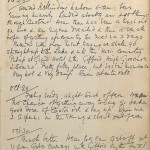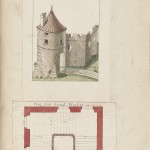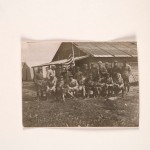It’s National Handwriting Day! The Smithsonian Field Book Project, a joint initiative between the Smithsonian Libraries, Smithsonian Institution Archives, and National Museum of Natural History to uncover, catalog, digitize, and share online the primary source records of scientific research done at, by, and for the Institution, celebrates this day with a showcase of some of the handwriting samples encountered during the project work. The Project works with materials stretching back almost 200 years, to 1816, and therefore often runs across examples of both very good and very bad handwriting.
Tag: Smithsonian Transcription Center

The travel journals of A.W. Quilter document his adventures in East Africa between 1909-1911, while on safari and engaging in big game hunting. These fascinating tales are now available in the Transcription Center for volunteers to read and review. While a great deal is still unknown about Quilter, for instance was he British or not, what is known from his journal was that he was a major in the military and embarked on his African safari from Nairobi, Kenya in October of 1909. What mysteries could a transcription of his journals uncover?

Sébastien Vauban (1633-1707) was the premier military engineer of his age and revolutionized siege warfare. Vauban was a Marshal of France as well as a Marquis. He is best known for his engineering and theoretical approach to fortifications, both on the design and attack fronts. One of his fascinating manuscripts on the fortification of cities was recently uploaded to the Smithsonian Transcription Center where you can help uncover its secrets.

Mary Smith’s Commonplace book concerning science and mathematics is a remarkable manuscript for several reasons. 1) It contains a wide breadth of information on the sciences of the mid to late 18th century 2) Mary Smith collected and compiled the information at a time when women were still not widely educated.

J.N. Bourassa’s A Vocabulary of the Po-da-wahd-mih Language is the latest addition from the Libraries to the Smithsonian Transcription Center. The Vocabulary was transcribed around 1890 from the original, which dates to 1843. The Potawatomi have traditionally inhabited the Upper Mississippi River region as well as Indiana and Kansas, and are making efforts to promote the use of their native language, a sub-group of the Algonquian language family.
John Kerr Tiffany (1842-1897) of St. Louis, Missouri is considered one of the earliest stamp collectors (known as philatelists) in the United States and belongs to the American Philatelic Society’s Hall of Fame. Tiffany was also the first president of the society in 1886 and was re-elected the following ten years, until he decided to stop running. In addition to having been an avid stamp collector, Tiffany created one of the largest library’s on the topic of stamps during his era, along with publishing books, catalogs and indexes on the topic. The National Postal Museum Library contains a manuscript copy from 1880-81 of Tiffany’s Philatelic Index.

